There are quite a few species of duck that nest in cavities. Most people are familiar with Wood Ducks nesting in tree cavities but Common and Hooded Mergansers, Barrow’s and Common Goldeneyes and Buffleheads (Bucephala albeola) are also cavity nesters.
Buffleheads, being the smallest North American diving ducks, are able to nest in cavities created by the Northern Flicker with an entrance hole measuring only 2 1/2 inches, allowing them to nest in cavities too small for the other larger cavity nesting ducks.
They breed in ponds and small lakes where they dive for insect larvae and amphipods and are are almost exclusively monogamous, keeping the same mate for several years1.
On a recent camping trip to Lassen Volcanic National Park in California, I was able to observe Buffleheads at Manzanita Lake, one of the many beautiful high mountain lakes in this park (see interactive map) and one of the few places that Buffleheads breed in Northern California (see more information on the bird species found at the park).
Because the male Bufflehead leaves its mate during incubation to molt, I saw no males at Lassen Park this trip, but I am posting a photo of the male I took last New Years Eve for those who haven’t seen one (click on photos for full sized images).
This is interesting behavior in a species whose pair bonds can last for years but these birds rejoin their mates in winter and renew their bonds.
I only saw a few females at Manzanita Lake this year, maybe because we were there so late in the season.
The juveniles were busy testing their wings, flying just above the water in a straight line, landing on the water, then turning around and flying back.
Mom was occasionally chasing off another adult female that had wandered into her territory. These juveniles looked to be several weeks old and would probably soon be on their own.
A female Bufflehead with a brood selects and settles on a territory within the first few days after hatching and strongly defends that territory against conspecifics and Goldeneyes, which often breed in the same location1.
The chicks are born precocial, with eyes open and ready to leave the nest. This usually occurs in the morning, within 36 hours after hatching. The female flies in and out of the nest several times, then sits at the cavity entrance for awhile, inspecting the surrounding area. She then flies out again with the hatchlings following.
Nest sites are near water but not over water and may be two to fifty feet above ground! Are you getting the picture here? The chicks have to jump out of a nest, to the ground below to follow their mom to nearby water.
I found a video demonstrating this phenomenon. You will hear the chicks peeping and the mom calling for them to jump as they take the big leap. You can also hear the chicks hit the ground. It’s amazing!
httpv://youtu.be/4W7CmCT6Soc
Nest cavities are often reused by Buffleheads for several seasons, especially if they had a successful hatch. However, females that had a failed nest attempt and non-breeding females will prospect for nest cavities during the summer. I have been lucky enough to observe this behavior for the last two years at Lassen Park.
It begins with the birds flying around through the trees until they spot a possible nest cavity. Sometimes they fly close to the entrance hole and make another go round, but they eventually land on the tree and peer into the entrance.
She will climb into the cavity if she thinks it may be usable and spend some time checking it out
She will also have a look below, presumably to see if there’s a decent landing spot.
This female is at least forty feet up in this pine tree.
This entrance is probably bigger than she would like, making it accessible by larger birds.
She looked at me seeming to ask “what do you think”?
What do I know about nest cavity selection? I’m only an observer, enjoying the scenery.
httpv://youtu.be/9fHL7KHIi1c
References: 1 Birds of North America Online


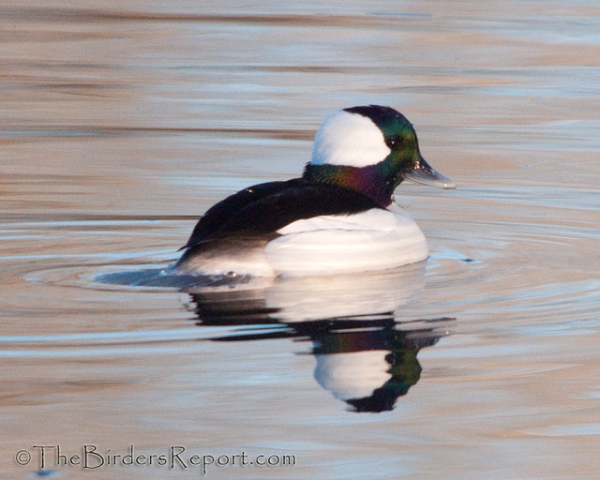
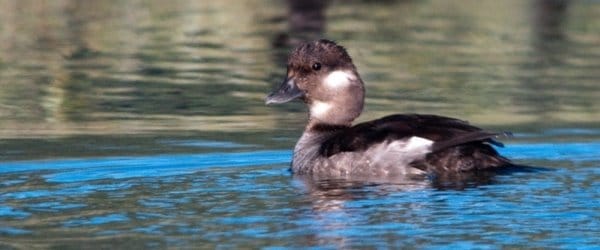
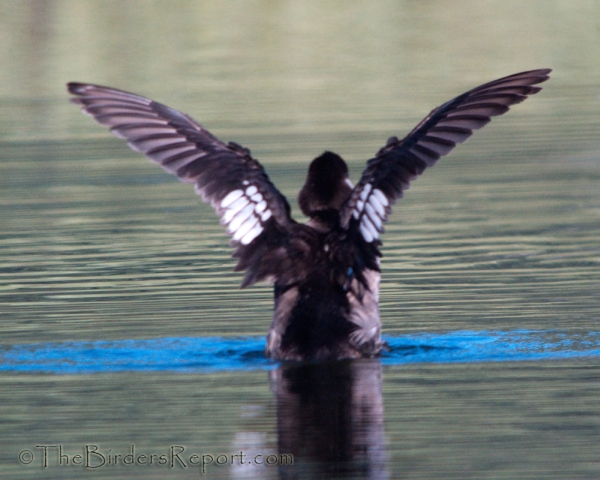
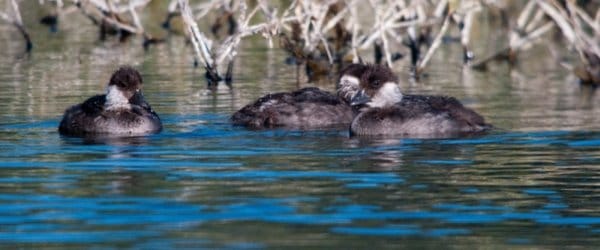
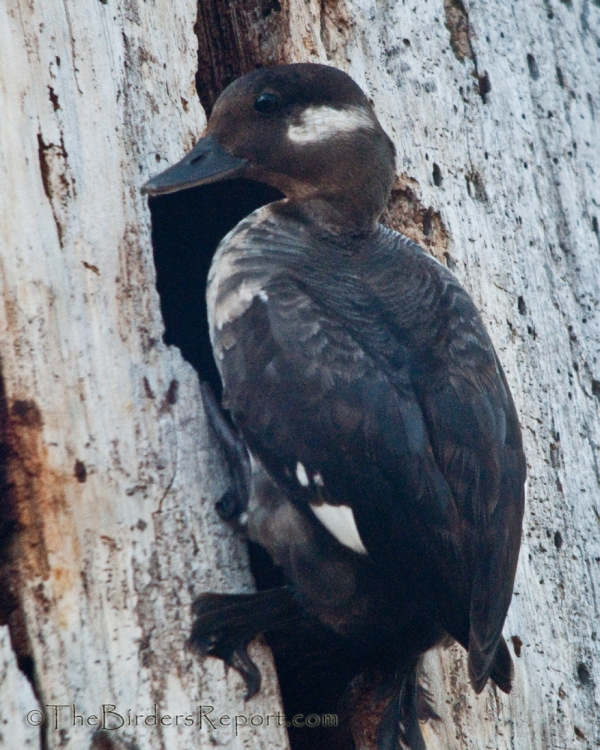
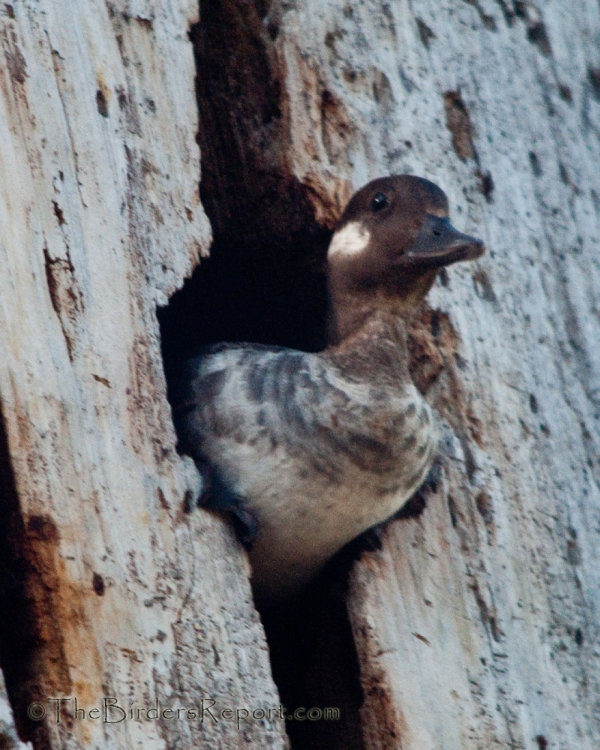
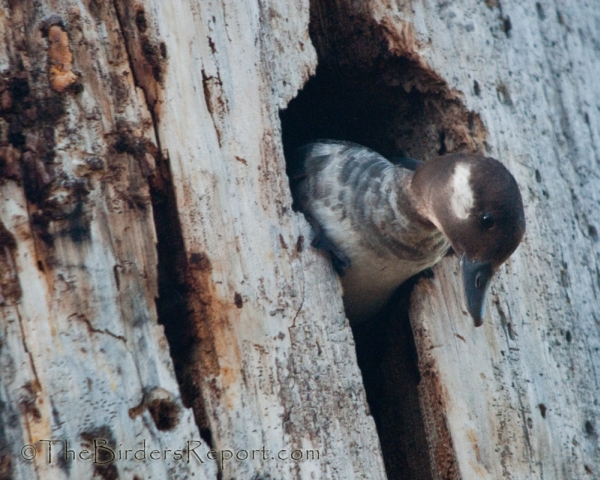
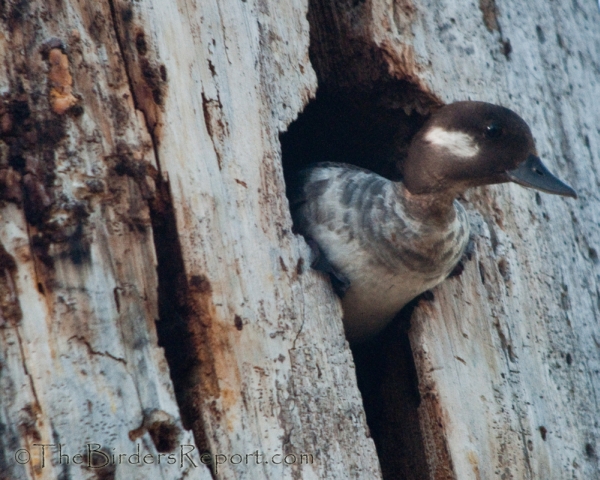
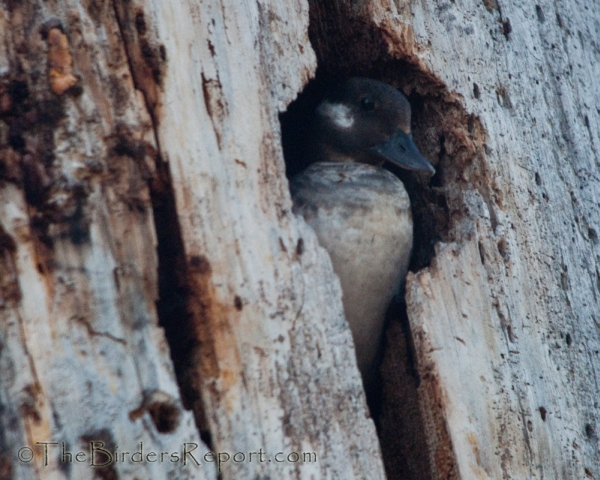
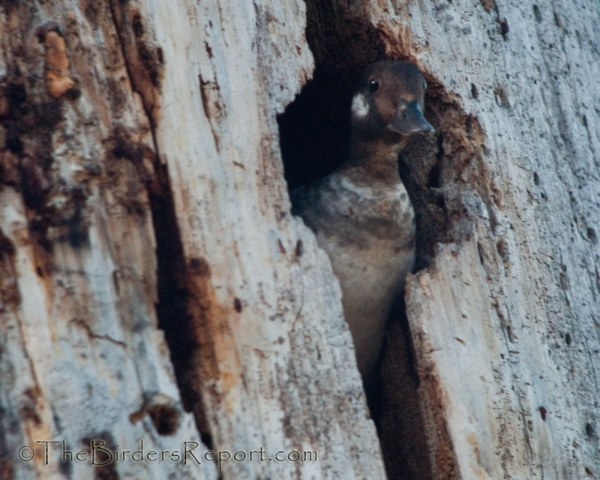











That is a great post. I have not seen a duck nesting on a cavity before.
How adorable! And one of the most educational posts I’ve read in a while. Thank you, Larry. Quick question — do you know how long the incubation period is? Because it’s amazing how ready-to-go the chicks are — within 2 days of entering the world they’re already flying and swimming!
Thanks also for a reminder of how cool and beautiful Buffleheads are. They’re one of the best parts of winter, for me. Bufflehead season is coming!
@Renato thanks. When I was able to witness this cavity search last year I was blown away watching these ducks fly around and land on the front of the snag. Now to have witnessed it two years in a row, i consider myself blessed 😉
@Meredith you are very welcome. Like most birds that hatch precocial young (eyes open, covered with down and ready to leave the nest), their incubation time is a bit longer than species that hatch atricial young (naked with eyes closed, depending on the parents to feed them).
Incubation time (by the female only, who woulda thought?) for the Bufflehead is 28 to 33 days. The male is already gone, as stated above, so the female leads the chicks to water but never feeds them. She broods them for two to three weeks but they feed themselves. They actually don’t fly until they are nearly two months old.
Larry- love the post! The video was great. Too bad your bufflehead didn’t nest there- you’d know where to go…
What a wonderful video. I was looking for photos of female buffleheads and thoroughly enjoyed your video of the young leaving the nest, as well as the photos of the female. I am having trouble distinguishing between the first year male and the females. THANK YOU!
We have 2 pair in the pond right across the road but not sure where they will nest. There are woods behind our home however I see cats lurking in there all the time.
They are beauties.